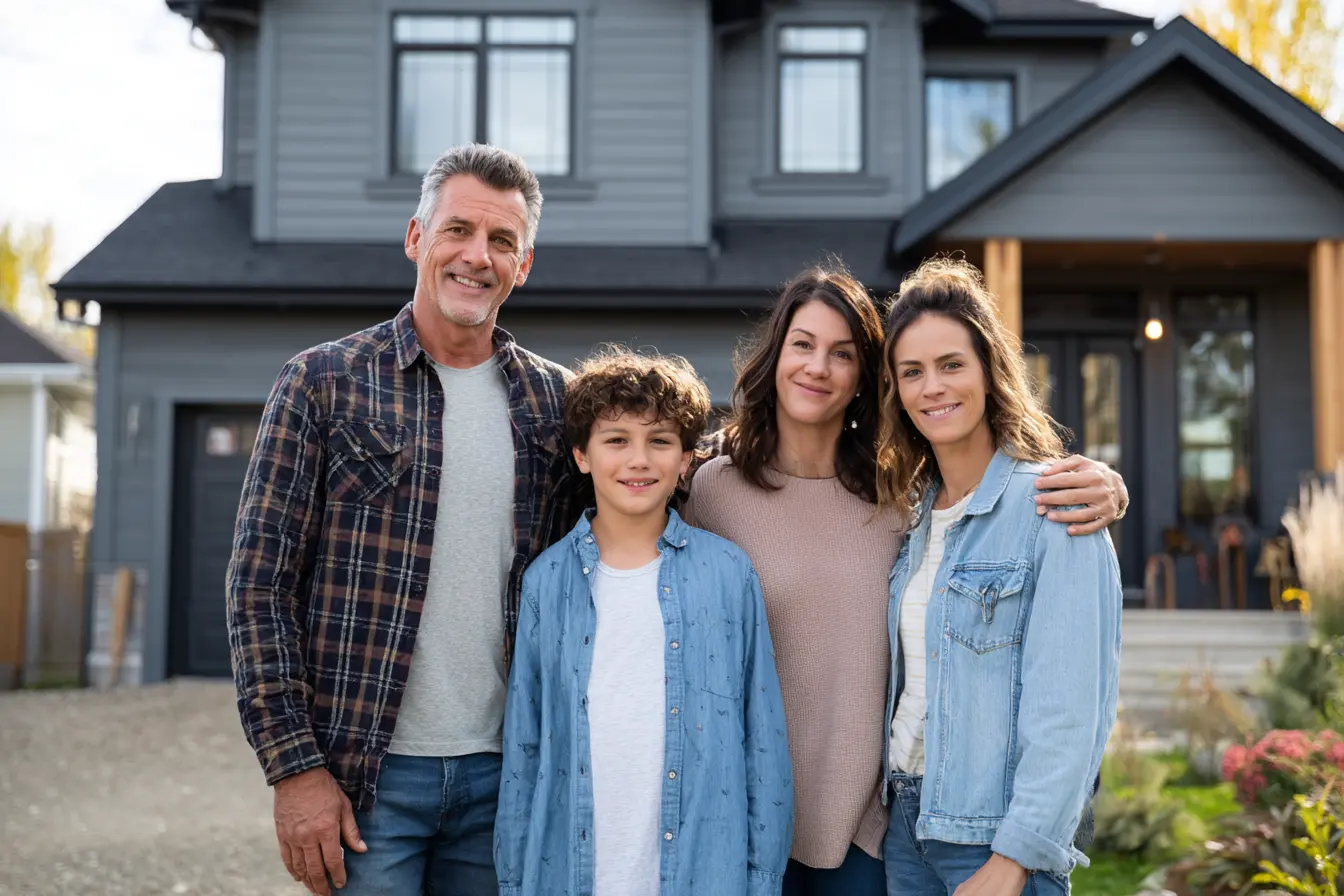Fast forward to today, home prices have gone through the roof in cities across Canada, making it significantly harder to buy a home for many Canadians. No matter how hard you save, rising home prices end up leaving you feeling further behind than when you started. Rent-to-own combines both the financial upside of home ownership with the flexibility of renting and is a great intermediate step between renting and owning.

What is Rent-to-Own?
Rent-to-own (also known as “lease-to-own”) generally refers to the arrangement where you agree to rent a home/property for a specific period of time and you have the option to eventually purchase the home at a later date.
There are usually two separate legal agreements involved:
- Standard lease agreement highlighting the fixed term that you will be renting the home/property from the property owner/investor, as well as how much your rent will be for the duration of the agreement. Here is a standard lease agreement in Ontario
- Option to purchase agreement covers the rights and obligations of renters/future homebuyers and current property owner/investor including some of key terms identified below.
.png)
Who is the Ideal Candidate for Rent-to-Own?
While not an exhaustive list, rent-to-own offers an alternative path to home ownership for people who can't typically get mortgages from a bank and include individuals:
- Who currently don't have enough saved for a down payment
- Who are working to improve your credit score
- Who are self-employed, contractors, and entrepreneurs
What are the Key Terms Included in the Rent-to-Own Agreement?
There are different ways to structure rent-to-own. Here is a list of key terms that you should be aware of.
1. The Future Buy Back Price (aka. the sale price you will have to pay down the line to buy back the home)
It’s usually pre-determined and agreed by you and the homeowner/investor at the start of rent-to-own agreement. Generally, it’s determined based on a fixed percentage of appreciation. For example, if the home value today is $100,000 and both parties agreed to a 5% appreciation per year, your future buy back price in a year will be $105,000.
You get to know precisely how much you need to pay for the home down the line. However, this could be a double-edge sword depending on how the direction the housing market goes in the future. If the housing prices increase more than the appreciation rate built in your buy-back price (i.e. 5% in this example), you’ll have the opportunity to buy back the home at a below-market value. On the flip side, if the housing market doesn’t appreciate as much, you’re locked-in a future buy back price that gives you no benefit.
2. Monthly Payment (aka. how much you'll be expected to may each month for the length of the agreement)
Generally there are two components with your monthly payment: your rent and extra savings you put aside consistently every month that will help you build your down payment to buy the home down the line. Essentially you are forced to save by paying a premium to the market rent every month, which can be used as your down payment to purchase the home.
3. Contract Term/Timeline (aka. how many years you'll be renting the home before you can exercise the option to buy)
Generally the same length as the lease agreement, the option period varies from 2 years to 5 years depending on how long you will need to either save up enough down payment or fix credit issues before you can get a mortgage to buy back the home. Keep in mind, the longer the contract terms, the higher your buy-back price will be.
4. Option Fee (aka. a deposit or down payment)
Usually you're required to put a deposit upfront that could range from 2% up to 10% of the home price. If you do decide to buy back the home down the line, these deposits will be used as your down payment. Keep in mind, depending on how the agreement is structure, these option fees and the extra savings you put aside are traditionally not refundable if you decided to not buy back or simply cannot buy back the home for whatever reason down the line.
How Requity Homes is Different
- Low down payment- you can start our program with as low as 2% down
- Move in today - instead of waiting several years for your finances to catch-up
- Build up your down payment over time - and benefit from rising home prices through fractional ownership
- Hassle-free living - we cover all major repairs and maintenance during the lease term
Rent-to-own is a great alternative path to home ownership if the traditional way of purchasing a home is out of reach for you. That said, it’s important that you fully understand the rent-to-own agreements and make sure the terms of the agreements are structured in a fair way.

About Requity Homes
Requity Homes offers a new path to home ownership by helping you live in your dream home today while saving up your down payment one month at a time. Check out how we can help accelerate your journey to home ownership.






